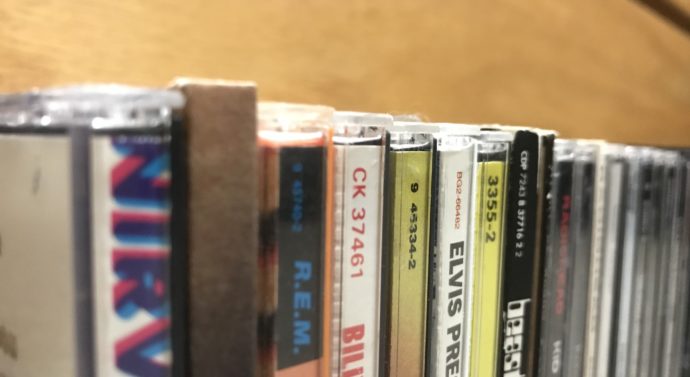
Mac’s Tracks: Copyrights and wrongs
Editorial September 14, 2018, Comments Off 1382The following is an edition of Mac’s Tracks, The Mirror’s music column. All views, thoughts and opinions belong solely to the author and do not necessarily represent those of the Drury Mirror.
The music industry is competitive, from getting your foot in the door to engineering the perfect song of the summer. Some master it so well that it catches on with other musicians, leaving radio listeners confused when they go to sing the opening lyrics to Dire Straits’ “Money For Nothing” and are instead met with “Don’t Stand So Close to Me” by The Police. Some songs seem to come in pairs. Artists want – and deserve – credit that belongs to them, but where does the line between homage and rip-off fall?
“Under Pressure” and “Ice Ice Baby”
Perhaps one of the most iconic disputes in sampling history, David Bowie and Queen squared off against Vanilla Ice for his use of the “Under Pressure” bassline in his 1990 hit, differentiated only by an extra note thrown in. Vanilla Ice originally tried to use that note as a defense that his song was completely original. However, Bowie and Queen later received songwriting credit on the track, and the case was settled out of court. This debacle ignited the debate around music plagiarism, despite the many cases preceding it.
“Misty Mountain Hop” and “Uncontrollable Urge”
This is worth mentioning almost solely because of fan reactions rather than any action taken by the musicians. Led Zeppelin has rightfully earned its place in rock history for legendary riffs, and its 1971 hit “Misty Mountain Hop” is no exception. Devo apparently agreed as they sampled the song for “Uncontrollable Urge” in 1978.
Led Zeppelin has faced their fair share of plagiarism suits, including a 1972 case with Willie Dixon over tunes in their “II” album that owed much to the blues classics that Dixon had penned. Although “Uncontrollable Urge” was almost certainly a case of a well-intentioned homage, the die-hard fans on each side are less accepting. Those standing with Devo criticize Zeppelin for their past issues with copyright, while Zeppelin defenders argue that Devo has not had the same lasting cultural effect.
A Personal Favorite
Bowie can’t seem to catch a break. His version of “All the Young Dudes” was released in 1974, though the song was originally recorded by Mott the Hoople in 1972. Two years later, Electric Light Orchestra’s “Telephone Line” was climbing the charts with a notably similar chorus progression. In 2009, Green Day put out “21 Guns” which, once again, seemed familiar.
No action was taken by any of the artists involved here, though Green Day has a reputation for producing parallel beats. The following case is an example of a true copyright triangle.
“Creep” and “Get Free” … and “Creep” Again
Lana Del Rey’s 2017 “Lust for Life” album featured the song “Get Free,” which, allegedly, hit a nerve with Radiohead for its refrain similarities to their smash hit, “Creep.” Del Rey took to Twitter to say that the band was demanding 100% of the publishing and that if no solution was reached, the track would be pulled from her album in future releases. Lawyers for Radiohead denied these claims, though they admited that they had talked with Del Rey’s team over the commonalities.
Ironically, Radiohead had previously been sued by Albert Hammond for similarities between “Creep” and “The Air that I Breathe,” made famous by The Hollies in 1974. Hammond and Mike Hazlewood now both receive credit on the song and the case was settled out of court.
Why it happens
Sometimes artists might just spark up controversy to gain publicity. While not an issue of copyright, the viral fight between Kanye West and Taylor Swift over his use of a line in “Famous” that she argues she did not agree to debatably happened to both artists’ benefit. West and Kim Kardashian later released a tape of a phone call with Swift that documented her signing off on the lyric, raising the question of just how staged the feud was.
Sampling can be wonderful for bringing a song back into the mainstream. Juice Newton’s “Angel of the Morning” may never earn the popularity of Shaggy’s “Angel” with today’s listeners, but it is featured in Deadpool 2. Nicki Minaj’s “Anaconda” samples heavily from Sir Mix-a-Lot’s “Baby Got Back” and both are far from fading into the background of anyone’s memory.
There are only so many notes and chord progressions out there. It’s nearly impossible to have songs without the same underlying structure especially with pop music “formulas” designed to catch your ear, as seen in the alleged dispute between Radiohead and Lana Del Rey and the Bowie-ELO-Green Day chorus trifecta. Many artists also do not write their own songs (cheers to Drake and Meek Mill for settling their dispute earlier this week). Especially in the era of classic rock and Motown, songwriters would work for multiple artists and use the same patterns across the board to bring in the big bucks for record labels.
Give a listen yourself; all songs mentioned in this article are available for streaming on Spotify and YouTube.
Did your favorite copycat not appear above? Share it down below.
Article by Maclen Johnson.